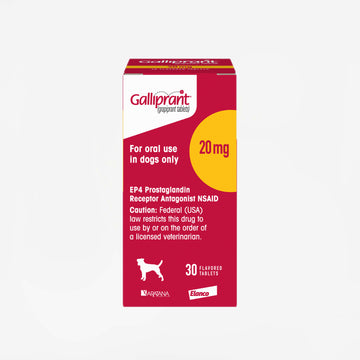Soothe your dog's arthritis & joint pain with online vet care
Talk to a vet today to get prescription medication mailed to you. Plans start at $11/mo.

- Same-day, night & weekend appointments
- Unlimited vet visits and follow-ups
- Prescriptions delivered free to you
- Our vets can treat 92% of joint issues

What does joint pain in dogs look like?
Even though dogs can’t talk, their behaviors and movement tell us when there’s an issue


How do I know if my dog has joint pain?
How do I know if my dog has joint pain?
You can tell if your dog has joint pain if they are more irritable than normal, are walking slower, take longer to get up in the morning, are sleeping more, and are reluctant to go on walks or take part in regular activities. If you notice any of these symptoms, schedule an online vet visit with Dutch to consult with a vet.
What are the first signs of arthritis in dogs?
What are the first signs of arthritis in dogs?
The first signs are typically difficulty getting up and down, stiffness while walking, reluctance to go up or down the stairs, and stiff or swollen joints. The signs of dog joint pain progress slowly over time, so it’s important to keep a close eye on your dog so you can identify the symptoms early on.
What can I do for my dog’s joint pain?
What can I do for my dog’s joint pain?
Depending on the cause and severity of the problem, your vet may recommend surgery, medication, or weight loss. There are a few at-home treatment methods you can try out as well, such as massage therapy and natural supplements. But as always, a vet will have the best idea of how to go about treating joint pain in a dog. Always consult a vet first before trying out any home remedies for your pup’s joint problems.
What is the best joint pain relief for dogs?
What is the best joint pain relief for dogs?
A vet can help determine the right joint pain relief for your dog. However, NSAIDs are typically prescribed to relieve joint pain and reduce swelling.
Dealing with dogs and joint pain can be stressful. Fortunately, there are various ways you can treat dog joint pain so you can get your pup up and walking like normal. And you can get this help on Dutch.com. Dutch provides convenient telemedicine for pets, so you can focus more on treating your dog than securing an appointment with your local vet.
How Dutch works
-
Pick a plan and become a member
-
Schedule a video call with a licensed vet
-
Order the prescriptions the vet recommends
Frequently asked questions
What can I use Dutch for?
What can I use Dutch for?
With Dutch, you’re never alone when it comes to your pet’s health. Whether your pet needs care or you just have a question, our compassionate and knowledgeable vets are always happy to help.
Here are some ways you can use Dutch:
- Care & prescriptions for over 150 issues
- Behavioral health, nutrition, and exercise advice
- Puppy, kitten, and new pet parent advice
- Preventive care plans
- Night and weekend vet care
- Second opinions & follow-up care after in-person visits
- Advice on whether you need to go to the ER or urgent care
- Vet care when you’re traveling
- Easy prescription refills
- Longevity treatment plans
- Answers to non-urgent questions
What is a visit with Dutch like?
What is a visit with Dutch like?
When booking a video call with a vet, you'll be asked a few questions about your pet’s health issue. Depending on the issue, you may also be asked to fill out a longer questionnaire about their symptoms and share photographs of them so our veterinarians can better understand what’s going on. You’ll then pick an appointment time that works best for you.
During your video call, one of our licensed veterinarians will talk to you about the symptoms your pet is experiencing, ask you questions, review your pet’s medical history if you’ve provided it, and answer any questions you have. The vet will ask to see your pet and their environment. And they may ask you to perform some simple checks on them if needed.
After your video call, the vet will send you a message with a custom treatment plan to help your pet feel better, including a link to buy any recommended prescription or over-the-counter medications. Place your order and we’ll ship it free.
How do I know if you can treat my pet?
How do I know if you can treat my pet?
Our vets can provide care and prescriptions for more than 150 issues — and over 90% of cases can be treated virtually.
The vet can diagnose your pet based on your description of their symptoms, their medical history, seeing them during your video call, and, if needed, through uploaded photos and videos. They may ask you to do a few simple checks during the call. We also offer a number of at-home lab test kits for dogs and cats.
The health and safety of pets is our top priority. In the rare case that a vet determines a pet needs to go to a local clinic, they’ll provide a referral and offer advice on how to care for them until they can be seen.
Some things that require in-person care include emergencies, wounds that need stitches, and issues that require blood work, imaging (X-rays or ultrasounds), or surgery.
Our vets are always available for second opinions and follow-up care after in-person vet visits — so you don’t have to navigate health issues alone.
How much will it cost for Dutch to treat my pet?
How much will it cost for Dutch to treat my pet?
Our memberships are designed to make your pet’s care as easy and affordable as possible. Here’s how your costs will break down:
Membership: You can choose to pay the total price upfront or in 4 installments. All memberships include unlimited care for up to 5 pets at no extra cost.
Vet calls and messaging: No cost — video chat and message with vets as often as you need for free.
Medication: The price will vary depending on your pet’s needs. To keep your costs down, we offer a price-match guarantee, free standard shipping, $25 off your first product order, and 20% off your first flea & tick order.




